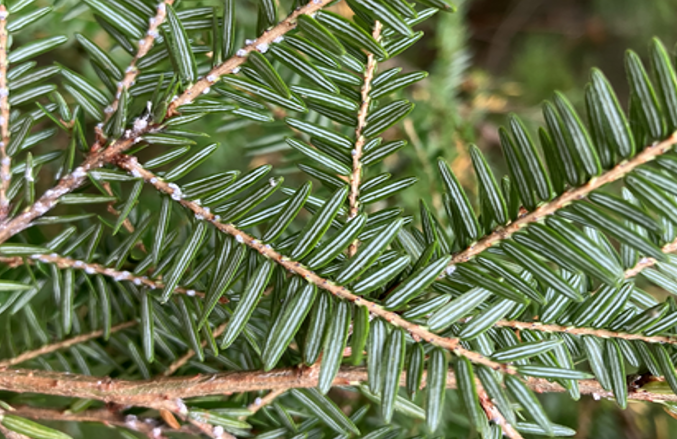
Post-release non-target impacts of hemlock woolly adelgid biocontrol
Principal Investigator: Angela Mech, University of Maine
One of the most sustainable tools to combat invasive species is the use of biological control. However, studies of non-target impacts of biocontrol agents following release are often lacking. The hemlock woolly adelgid (HWA), an invasive species in eastern North America, has had a management program involving the releases of multiple predator species from Asia and the Pacific Northwest since the 1990s. The northern part of eastern hemlock’s range contains a high diversity of conifer species, and therefore a high number of other adelgid species as well as their predators, many of which are congeners of HWA’s introduced predators. It is currently unknown how prevalent host alternating is with both the native and non-native released adelgid predators, and what direct and indirect effects may be occurring due to it. It is possible that the changes in predator and adelgid species richness in a forest area introduces new relationships that could change predator-prey dynamics in this system, with cascading effects on tree health. The objective of this research is to contribute to HWA biological control programs by better understanding the potential non-target impacts of predator releases (on other adelgids, their predators, and their host trees) in the Northern Forest where there is a high diversity of these insect groups. Results will help promote healthy conifers, including eastern hemlock and eastern white pine, of the region.